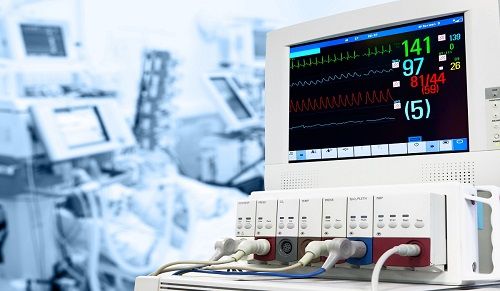Article
How to Use Smartphones to Screen Thousands for Atrial Fibrillation
Author(s):
Smartphone screening for atrial fibrillation goes big in Hong Kong.

A large trial from Hong Kong suggests that a combination of simple, wireless electrocardiograms (ECGs) and common smartphones may be an effective and economical way to screen large populations for atrial fibrillation (AF).
Investigators from Princess Margaret Hospital tested the technology on 13,122 people who participated in a territory-wide AF screening program between May 2014 and April 2015. The testing system paired a smartphone and a wireless single-lead ECG, and the actual tests lasted 30 seconds.
Although the system was cheap and portable, only 56 of the tests (0.4%) were uninterpretable. Overall, the system detected AF in 1.8% of all patients. Most of those cases had already been detected through conventional means—a total of 8.5% of all patients had been previously diagnosed — but the system was the first to diagnose AF in 101 (0.8%) of the study participants.
The condition was symptomless in two thirds of those new cases, so it is unlikely that it would have been detected by conventional testing until the disease progressed to the point that it was more dangerous.
“Community screening for AF with single-lead ECG was feasible and it identified a significant proportion of citizens with newly diagnosed AF,” the study authors wrote in Heart.
Current guidelines do not call for systematic, mechanical AF screening in any large population — such as all people over 65 years old – because studies have found wholesale use of a standard 12-lead ECG to be less cost-effective than frequent manual checks, followed by ECG if pulse seems irregular. A 2007 study published in the British Medical Journal, for example, found that the two methods detected about the same number of AF cases but that manual checks were significantly cheaper.
Medical researchers, programmers and device makers have been working for several years now to create smart phone-based screening systems that can make regular ECG testing cost-effective for large numbers of at-risk patients.
Trials have already led the US Food and Drug Administration to approve an AliveCor system that combines smart phone software and a $99 two-sensor ECG that fits into specially designed phone cases. Users put the first two fingers from one hand on one sensor in the first two fingers from the other hand on the other. If the software detects signs of a problem, it sends the data to a medical professional (generally the user’s doctor) for further analysis.
Other trials have found that it’s also possible for software to detect AF using just a smartphone’s flash and camera. A 2013 paper from HeartRhythm reported on real time analysis of pulses detected by the camera in a flash-illuminated finger.
“An algorithm combining the two statistical methods demonstrated excellent sensitivity (0.962), specificity (0.975), and accuracy (0.968) for beat-to-beat discrimination of an irregular pulse during AF from sinus rhythm,” the authors of that study wrote.
A 2016 paper in the Journal of the American Heart Association reported the results of a larger trial of a potential commercial app (also from AliveCor) that would detect AF by similar means. AF was diagnosed in 28 (2.76%) of 1,013 participants. The diagnostic sensitivity of the software for AF detection was 92.9% while the specificity was 97.7%.
Such trials suggest that the technology is ready for widespread deployment, and the new trial from Hong Kong suggests that it can be used on a very wide scale, but there’s little evidence that it is being very widely used to date, either by physicians or by individual patients.





